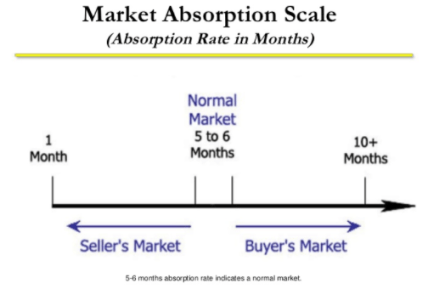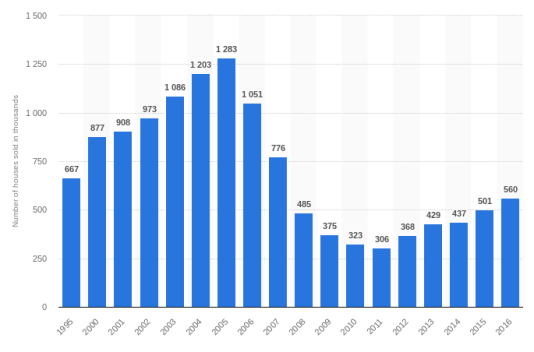Consumer Economics: What is the Market Absorption Rate?
In school, some students avoid economics because they might feel as though the lessons have little-or-no application in the real world. Unfortunately, this is usually not actually the case. Economics concepts play many roles in our daily lives – and if we can understand how these concepts work, we can often save money in the process.
One important classical economics concept is the Market Absorption Rate (MAR), which is the rate at which homes are closing as sold in a specific geographic location. The MAR is calculated by taking the total number of available homes, and dividing that number by the average number of homes sold per month.

This time scale gives us economic information that can be helpful for anyone that is looking to either sell a home or purchase a home. In 2016, 560k homes were sold in the U.S., which is actually well-below the long-term historical averages. But this is still a number that impacts the lives of a large number of people and their businesses:

In simple terms, the MAR let’s us know the number of months it will take before the market supply of houses available for sale is exhausted.
Real estate professionals use this information to estimate an approximate listing time the “For Sale” listing will likely require before a buyer is found. A real estate agent divides the number of listings in a market by the number of accepted contracts over a given period of time.
For a real-world example, let’s assume:
- 3,000 houses were listed for sale over the last 180 days.
- 1,700 of those homes sold.
- This means, it would likely take 78 more days for the remainder to sell.
- Average market time = 129 days, or about 4.3 months.
Of course, the number is not always perfect because more houses will come onto the market during that time. For these reasons, the MAR is more useful as a trend indicator rather than an actual estimate of when an individual home will sell. The market absorption rate provides an approximate average.
Broader Economic Theory
As part of broader economic theory, the market absorption rate can be useful for businesses that want to understand how quickly customers will be able to buy the total supply of their product. It is never a good idea for businesses to produce too much, as this leads to a buildup in costs. The MAR is a simple formula that can give business owners an idea of how long it will take for the market to “absorb” all of the available product supply. This is an important concept that influences that way major parts of the economy operate on a daily basis.

Other factors that help to determine the length of time it will take for a product supply to sell can be found in the seasonal part of the year, current financial conditions (i.e. interest rates), and the availability of competitive supply in the market. These are broader market variables that can fluctuate over time.
For instance, whenever interest rates are low consumers are more likely to commit (rather than browse), and this reduces the average time on the market for that product. There will also be times when rising interest rates will not deter consumer buying in cases where product supply is limited (the same number of people chasing fewer goods). But, in cases where there is market oversupply and interest rates are high, the average time to sale can increase.
Conclusion: To Know if Buyers or Sellers are in Control, MAR is Key
Anyone looking to understand and analyze market activity must make assessments of buying and selling pressures. The MAR gives us information about the major trend activity that is being seen in both of those areas in the market.
The concept can be applied to areas like Real Estate, but it can also be applied to any dynamic that exists between the supply side (the producing company) and the demand side (the eventual consumer sale). These are all useful terms any time you are constructing a business plan or looking to make your operations more economically efficient.
